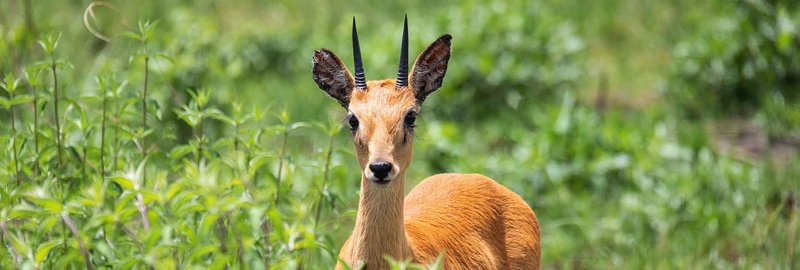
Understanding the Oribi isn’t just about knowing its diet; it’s also about appreciating how it interacts with its environment. This charming antelope, native to eastern and southern Africa, has developed unique ways to survive that are as strategic as they are fascinating. From its selective eating habits to its clever escape techniques, the Oribi is a master of adaptability. Let’s break it down.
What Is an Oribi?
Before we get deep into their diet and hunting strategies, let’s clarify what an Oribi is. The Oribi (Ourebia ourebi) is a small to medium-sized antelope that typically weighs between 40 to 50 pounds. One of its most distinctive features is its short, stocky body and long legs, which enhance its speed. The fur is a beautiful tawny brown, providing excellent camouflage among the grasses and bushes.
Oribis are usually found in open grasslands and scrub areas. They prefer habitats with dense grass or cover to hide from predators. You might even spot them in small family groups, often including a mother with her young. It’s quite a sight to see these graceful creatures bounding across the landscape.
The Oribi’s Diet: What Do They Eat?
You might be wondering, “What’s on the menu for an Oribi?” Well, these little antelopes are herbivores, which means they primarily eat plant material. Their diet mainly consists of grasses, herbs, and leaves. They are particularly fond of young, tender shoots, which are not only nutritious but also easier to digest.
Here’s the thing: Oribis are quite picky eaters. They tend to select specific types of grasses that have higher nutrient content. This selectivity plays a crucial role in their survival, especially in environments where food availability can vary. Since they often graze in the early morning or late afternoon, they can stick to cooler temperatures, minimizing the energy they expend.
Hunting and Predation: The Oribi’s Strategies for Survival
Now, let’s talk about the Oribi’s main challenge: predators. In the wild, these gentle creatures face threats from various carnivores like lions, hyenas, and leopards. So, how do they manage to stay safe? The Oribi has developed some clever strategies.
First off, they rely heavily on their incredible speed and agility. When a predator gets too close, an Oribi can make quick, sharp turns and leap distances of up to 10 feet to escape. It’s like watching a skilled athlete in action! Their strong legs allow them to dash away quickly, which is vital in the wild.
Moreover, Oribis are also good at using their surroundings to their advantage. They often stay in areas with tall grass and bushes, where they can easily hide from predators. And if they sense danger, they will often remain still, using their brown coats as natural camouflage. This strategy helps them avoid detection.
The Role of Social Behavior in Hunting Strategies
Interesting enough, the social behavior of Oribis also contributes to their survival tactics. They tend to be somewhat solitary animals or form small family groups. While being alone can come with risks, it also means less competition for food resources.
In these family units, the mother typically leads the way, teaching her young ones crucial survival skills. Young Oribis often mimic their mothers’ grazing habits and learn to recognize threats. This learning curve plays an essential role in the youngsters’ eventual independence and ability to thrive on their own.
Seasonal Challenges and Adaptations
Just like us, Oribis face seasonal changes that affect their diet and hunting strategies. During the dry season, when food becomes scarce, they may adapt their grazing patterns. They might travel further in search of greener pastures. Here’s where their adaptability shines.
In wetter seasons, when grass is plentiful, Oribis can afford to be more selective, munching on the most nutritious options. This ability to adjust their eating habits is crucial for maintaining their health throughout the year.
Conservation and the Future of the Oribi
Sadly, the Oribi faces threats from habitat loss and hunting. As human development encroaches on their natural habitats, these charming antelopes are at risk. Conservation efforts are essential to ensure their survival and help maintain the balance of their ecosystems.
Local organizations and wildlife reserves play a vital role in protecting their habitats and raising awareness about the importance of this species. Supporting these efforts not only helps the Oribi but promotes biodiversity as a whole.
The Oribi may be small, but it packs a lot of strategy into its daily life. From its careful diet of grasses to its impressive hunting strategies, it has learned to thrive in the wild despite the dangers. By understanding and appreciating the Oribi, we can better grasp the intricate web of life in the savanna.
Next time you find yourself in a conversation about wildlife, you can share the incredible story of the Oribi. It’s not just about what they eat or how they evade predators; it’s about their resilience and the role they play in the ecosystem. Let’s hope we can continue to enjoy their presence in the wild for generations to come.
